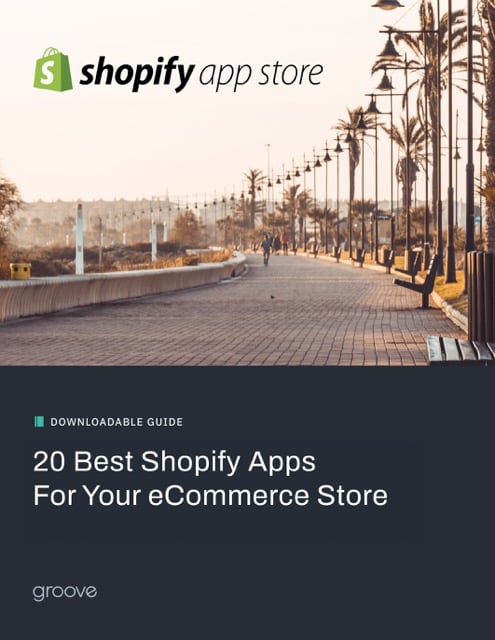If you’re looking to accomplish specific business objectives - like offering downloadable content (ebooks, webinars, etc.), free trials, demos or discounts for products - landing pages are the place to do so.
Landing pages have clear objectives that offer something of value to consumers and improve conversion rates. These pages are separate from your business’s website and often restrict navigation, competing links and alternate options in order to eliminate distractions and capture your visitors’ attention.
With fewer distractions, visitors invest more attention on the page and are more likely to follow where you want to guide them. However, a large aspect of keeping a visitor’s interest is the visual appeal of the landing page.
There will never be a perfect formula, but there are best practices to follow. We want to share our favorite landing page design best practices that will help you create a layout to easily guide users through the offer and, ultimately, boost conversions.
Landing Page Design Basics
Your goal is often to convert first-time visitors who visit your landing page. This means they need to be familiar with your brand. Using consistent colors, fonts and images that reflect your brand will make visitors easily recognize your brand. This builds trust, and the more trust visitors have, the easier it will be to get them to do what you want them to do.
Staying true to your brand applies to both above and below the fold of your landing page, but there are also other aspects of the design process to keep in mind. We have come up with a list of basic guidelines to help you design the best landing page for your business:
Above the Fold
Design elements above the fold are what makes the initial impression on site visitors. Therefore, it is important to properly design this part of the page to capture a visitor’s attention before they choose to abandon the page.
The most important information should be kept above the fold so that visitors don’t have to scroll to find what they’re looking for. Best practices states that it should take less than five seconds for visitors to understand the main message of the page.
Some elements to include above the fold are
- Clear headlines
- Forms and CTAs
- Visually compelling images/videos.
1. Have clear headlines
The headline is the first element visitors are likely to see when they ‘land’ on the landing page. Be sure to make your headline clear and concise because it’s an attention-grabbing device that sums up the value of the offer or product being showcased. When visitors arrive on your landing page, they need to understand what it is all about and what is in it for them within seconds.
Landing page headlines essentially tell visitors what they’ll receive. This can be something as simple as the product name, an offer or the challenge that the product solves. Advertisement and landing page headlines that are worded and styled consistently with ad copy will make a seamless transition between pages that contribute to higher conversion rates.
2. Forms and CTAs
Without a clear call-to-action, consumers will be more likely to bounce from your page due to a lack of guidance. Should a prospect want to convert right away, the CTA needs to be readily accessible. Burying these elements at the bottom of your page requires visitors to look for them, which they often don’t have the patience to do.
Lead-capture forms are one of the most critical components of any landing page because it’s where page visitors submit their information in exchange for the offer, which converts them into coveted sales leads. However, the fewer the form fields, the better. Short forms that don’t ask for too much information right away will usually get more conversions, so asking for basic information like name and email address is a great place to start.
Consider placing the form next to the content offer’s picture to show an appealing reminder of what they will get in return for their basic information. You can also design the page to have the form scroll with the visitor so it stays visible the whole time.
Another concern that prospects have about filling out forms is security. People can feel anxious and often take caution when asked to provide sensitive information online, so you should show your visitors that they can trust you with their personal information. Linking your privacy policy, making your logo visible, including client testimonials and/or using awards - like an authority endorsement, third-party security certification or guarantee seal - will show users the credibility of your site. This will reduce friction when visitors fill out your form.
CTAs are another important part of your landing page and encourage conversion. To best capture visitors’ attention, the CTA button needs to stand out. Use a color that contrasts with other elements of the page to make it more prominent, as well as make it big enough for visitors to see easily.
To complement the CTA button, include click triggers. These are copy positioned next to your CTA that is designed to eliminate any lingering doubt visitors have before converting. Usually, this copy should get to the point in five words or less.
Some examples of effective ways to employ click triggers include:
- Money-back guarantees
- Easy unsubscribe
- A quote from a successful or happy customer
- A blurb on “what to expect”
- Price slashing
- Privacy policies
When designing CTA buttons, you should also avoid using the word “Submit.” Studies show that landing pages with buttons labeled “Submit” have lower conversion rates than other wording, such as “Download” or “Get It Now.”
3. Vivid imagery and video
Relevant visuals can explain the offer more efficiently and take the place of using too much copy. Images and videos set the tone for users’ experience since those visuals are the first things they notice. Visual components are mandatory and should show how your visitor will feel after receiving your offer. By representing your target audience, you will add value to your landing page.
Images and videos should also be placed somewhere that will drive site visitors to where you want them on the page. Consider images or videos that will drive their attention to forms and CTAs or encourage them to look further into your products or services.
For both images and videos, remember to include relevant alt tags to offer descriptive text for those who cannot see the visuals; this will even boost your SEO. Search engines better interpret the content of your visuals if they have alt tags, so it is imperative that the description is relevant to the visual and only uses relevant keywords. Brief alt tags are recommended, and many elements require descriptions that can only be 10 words or less.
Below the Fold
Although the elements above the fold are the most prominent, do not ignore what belongs below the fold. You should include:
- Supporting content
- Social proof
- Related products.
1. Supporting content
Just because you’ve already placed important visuals above the fold does not mean you can’t place other relevant content below the fold. Providing more supporting content can deepen the visitor’s understanding of your message.
Video marketing has become increasingly popular and has been proven to increase conversions by up to 80 percent. Using video is a more personal way to share messages and connect with potential leads and allows for more engagement than an image.
When thinking about incorporating videos onto your landing page, make them an effective element that doesn’t distract visitors from the CTA.
Keep in mind that not all visitors just want to watch a video or look at an image - some prefer text to accompany visuals. Keep this in mind when designing your landing pages so that you can offer an experience that appeals to a variety of audiences.
2. Social proof
Social proof is an effective way to build trust and persuade people to complete desired actions. You can sway visitors to convert by using testimonials, customer reviews or logos of brands you’ve partnered with. This shows that others have used and benefited from your product or service and also validates your offer with no questions asked.
Other forms of social proof are social sharing buttons, embedded tweets, Facebook posts, Instagram posts, and tickers which show how many people have used, purchased or downloaded your content. Showing visitors the positive reactions from previous customers is likely to evoke positivity from potential leads, which can lead to filling out forms and converting.
3. Related products
Upselling related products can close sales at a higher price and encourage customers to purchase from you again. Upselling on your landing page can include single item suggestions, like accessories related to the product or bundles that include items that are often purchased along with the main product. Although this gives site visitors a chance to exit the landing page, it’s a proven way to increase revenue and conversion rates.
Conclusion
Although these best practices may seem like small steps individually, utilizing them all together can present great results. Designing your site with the user in mind and using A/B testing will help to ensure that your accurate website design drives potential customers down the funnel.
Are you looking to optimize your landing page designs or your website? Contact us today to get in touch with our Creative Team!

E-BOOK
20 Best Shopify Apps For Your eCommerce Store
Explore tags:
About the author
Subscribe to the Groove Newsletter
Get the latest updates and insights straight to your inbox



